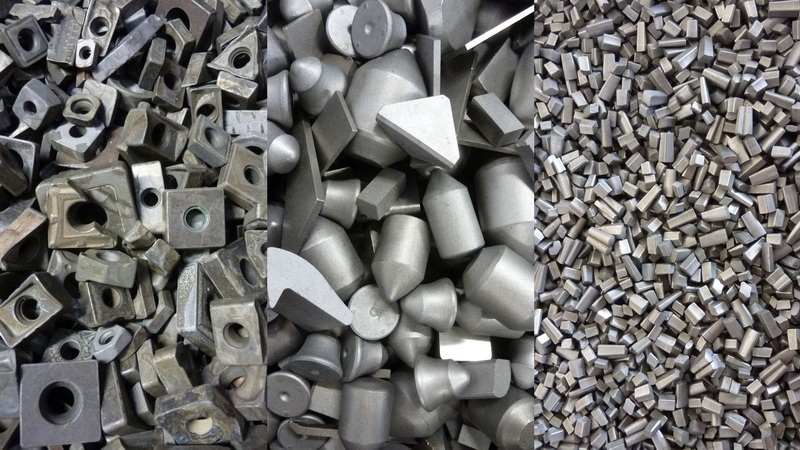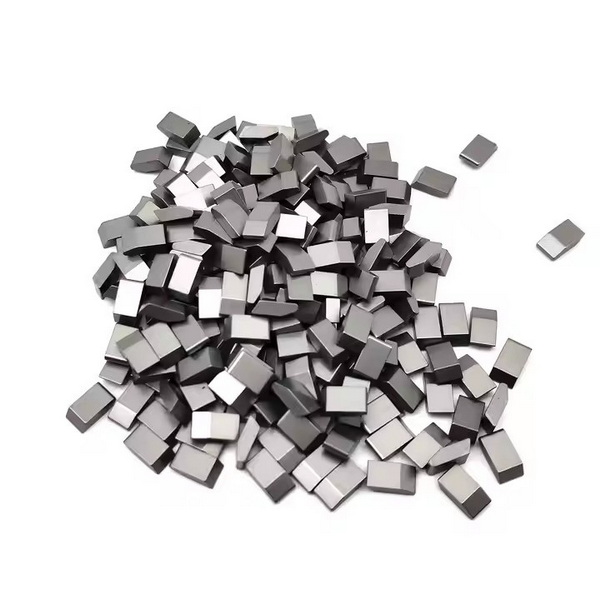Content Menu
● Understanding Tungsten Carbide
>> Chemical Properties
● What Are Bluing Salts?
>> Composition of Bluing Salts
>> Potential Effects of Bluing Salts on Tungsten Carbide
● Factors Influencing Discoloration
>> Environmental Factors
● Maintenance Tips for Tungsten Carbide
>> Cleaning Techniques
>> Storage Solutions
● Common Misconceptions About Tungsten Carbide
>> 1. Tungsten Carbide Is Indestructible
>> 2. All Tungsten Carbide Is Created Equal
>> 3. Tungsten Carbide Jewelry Cannot Be Resized
● Real-Life Applications of Tungsten Carbide
>> Industrial Tools
>> Medical Devices
>> Aerospace Components
● Conclusion
● FAQ
>> 1. Does tungsten carbide change color over time?
>> 2. How should I clean my tungsten carbide ring?
>> 3. Can I wear my tungsten carbide jewelry while swimming?
>> 4. Will my skin turn green from wearing tungsten carbide?
>> 5. How do I store my tungsten carbide items?
● Citations:
Tungsten carbide is a popular material known for its exceptional hardness and durability, making it a favored choice for jewelry, industrial tools, and various applications. However, questions often arise regarding its resistance to discoloration, particularly when exposed to certain chemicals such as bluing salts. This article explores the properties of tungsten carbide, its interaction with bluing salts, and provides insights on maintenance and care.

Understanding Tungsten Carbide
Tungsten carbide (WC) is a chemical compound consisting of tungsten and carbon. It is renowned for its hardness, ranking between 8.5 and 9 on the Mohs scale, which makes it one of the hardest materials available. Tungsten carbide is often used in jewelry, cutting tools, and industrial applications due to its impressive physical properties:
- High Hardness: Tungsten carbide is extremely hard and resistant to scratching.
- Durability: It withstands wear and tear better than many metals.
- Corrosion Resistance: Tungsten carbide is generally resistant to corrosion from various chemicals.
Chemical Properties
The chemical stability of tungsten carbide is significant; it does not tarnish easily under normal conditions. However, exposure to certain chemicals can lead to discoloration or changes in appearance. For instance, bluing salts, which are typically used in metal treatment processes, may interact with tungsten carbide under specific conditions.
What Are Bluing Salts?
Bluing salts are chemical compounds used primarily for treating steel to enhance corrosion resistance and aesthetic appeal. They typically contain sodium hydroxide (lye) and other salts that react with iron to form a blue-black oxide layer. While tungsten carbide is not iron-based, understanding the potential interactions with bluing salts is crucial for maintaining its appearance.
Composition of Bluing Salts
Bluing salts usually consist of a mixture of sodium hydroxide and other metal salts. The sodium hydroxide acts as a strong alkaline agent that can facilitate the oxidation process when applied to ferrous materials. The resulting blue-black layer formed on steel provides a protective coating against rust and corrosion.
Potential Effects of Bluing Salts on Tungsten Carbide
1. Surface Coating: Bluing salts may create a surface reaction that could alter the appearance of tungsten carbide rings or tools.
2. Chemical Reaction: Although tungsten carbide is resistant to many chemicals, prolonged exposure to strong alkaline solutions could potentially lead to discoloration or degradation of any applied coatings or finishes.
3. Plated Finishes: If the tungsten carbide item has a plated finish (e.g., gold or rose gold), bluing salts could affect the plating rather than the tungsten carbide itself.
Factors Influencing Discoloration
Several factors can influence whether tungsten carbide will discolor when exposed to bluing salts:
- Moisture Exposure: Prolonged exposure to moisture can exacerbate reactions with certain chemicals.
- Quality of Material: High-quality tungsten carbide jewelry typically does not discolor easily compared to lower-quality alternatives.
- Coatings and Finishes: The presence of coatings (like PVD or ion plating) can affect how the material reacts with chemicals.
Environmental Factors
The environment in which tungsten carbide items are used can also play a significant role in their longevity and appearance. Factors such as humidity, temperature fluctuations, and exposure to various substances can impact how well the material holds up over time.
1. Humidity: High humidity levels can lead to moisture accumulation on the surface of tungsten carbide items, potentially increasing susceptibility to chemical reactions.
2. Temperature Fluctuations: Extreme temperature changes can cause materials to expand and contract, potentially leading to micro-cracks that may harbor moisture or chemicals.
3. Chemical Exposure: Regular exposure to household cleaners or industrial solvents can accelerate wear on both tungsten carbide and any coatings applied.

Maintenance Tips for Tungsten Carbide
To preserve the appearance of tungsten carbide items:
- Avoid Harsh Chemicals: Keep tungsten carbide away from strong cleaning agents and chemicals like chlorine or ammonia.
- Regular Cleaning: Clean with mild soap and water; avoid abrasive materials that could scratch the surface.
- Proper Storage: Store in a soft cloth bag or original box when not in use to prevent exposure to moisture and chemicals.
Cleaning Techniques
When it comes to cleaning your tungsten carbide jewelry or tools, there are several effective methods you can employ:
1. Soap and Water Method:
- Mix warm water with mild dish soap.
- Soak your tungsten carbide item for a few minutes.
- Use a soft cloth or toothbrush to gently scrub away any dirt or grime.
- Rinse thoroughly with clean water and dry with a soft towel.
2. Ultrasonic Cleaners:
- For more thorough cleaning, ultrasonic cleaners can be used safely on tungsten carbide.
- These devices utilize high-frequency sound waves in a cleaning solution to remove dirt without scratching the surface.
3. Avoid Abrasive Materials:
- Never use steel wool or harsh scrubbing pads as they can scratch the surface of your tungsten carbide items.
Storage Solutions
Proper storage is essential for maintaining the integrity of your tungsten carbide pieces:
- Soft Cloth Bags: Use soft cloth bags that prevent scratching when storing rings or bracelets.
- Jewelry Boxes: Consider using a jewelry box lined with fabric that cushions your items from impacts.
- Avoid Mixed Storage: Do not store tungsten carbide items alongside softer metals like silver or gold that may scratch them.
Common Misconceptions About Tungsten Carbide
Despite its popularity, there are several misconceptions surrounding tungsten carbide that should be addressed:
1. Tungsten Carbide Is Indestructible
While tungsten carbide is incredibly hard, it is not indestructible. It can chip or break if subjected to extreme force or impact, especially if dropped on a hard surface.
2. All Tungsten Carbide Is Created Equal
The quality of tungsten carbide can vary significantly based on manufacturing processes and purity levels. Higher-quality products will generally offer better resistance to discoloration and wear.
3. Tungsten Carbide Jewelry Cannot Be Resized
Due to its hardness, resizing tungsten carbide rings is challenging compared to traditional metals like gold or silver. If you need resizing, it's best done by professionals who specialize in this material.
Real-Life Applications of Tungsten Carbide
Tungsten carbide's unique properties make it suitable for various applications beyond jewelry:
Industrial Tools
Tungsten carbide is widely used in manufacturing cutting tools due to its hardness and wear resistance. Industries such as mining, construction, and machining rely on tungsten carbide bits for drilling and cutting operations.
Medical Devices
In medical applications, tungsten carbide's biocompatibility makes it an excellent choice for surgical instruments that require durability without compromising safety.
Aerospace Components
The aerospace industry utilizes tungsten carbide in components that must withstand extreme temperatures and pressures while maintaining structural integrity.
Conclusion
In summary, while tungsten carbide is known for its durability and resistance to tarnishing, exposure to bluing salts can potentially lead to discoloration under certain conditions. It is essential to maintain proper care by avoiding harsh chemicals and regularly cleaning items made from this remarkable material. By following recommended maintenance practices, you can ensure that your tungsten carbide jewelry or tools retain their aesthetic appeal over time.

FAQ
1. Does tungsten carbide change color over time?
Yes, while tungsten carbide itself does not tarnish easily, exposure to moisture and certain chemicals can lead to color changes in plated finishes.
2. How should I clean my tungsten carbide ring?
Clean your ring using warm water mixed with mild soap or white vinegar. Avoid using abrasive cleaners or harsh chemicals.
3. Can I wear my tungsten carbide jewelry while swimming?
It is best to remove your tungsten carbide jewelry before swimming in chlorinated water as chlorine can affect coatings.
4. Will my skin turn green from wearing tungsten carbide?
High-quality tungsten rings do not cause skin discoloration; this issue typically arises from cheaper alloys containing copper.
5. How do I store my tungsten carbide items?
Store your tungsten items in soft cloth bags or their original boxes when not in use to protect them from moisture and scratches.
Citations:
[1] https://www.bluenile.com/education/metal/tungsten
[2] https://en.wikipedia.org/wiki/Tungsten_carbide
[3] https://www.zhongbocarbide.com/does-tungsten-carbide-change-color.html
[4] https://www.eng-tips.com/threads/tungsten-carbide-wedding-ring-is-dirty.230838/
[5] https://www.linde-amt.com/resource-library/articles/tungsten-carbide
[6] https://pmc.ncbi.nlm.nih.gov/articles/PMC10763598/
[7] https://www.larsonjewelers.com/pages/how-to-clean-your-tungsten-ring
[8] https://www.carbideprobes.com/wp-content/uploads/2019/07/TungstenCarbideDataSheet.pdf
[9] https://generalcarbide.com/pdf/General-Carbide-Designers-Guide-Tungsten-Carbide.pdf
















